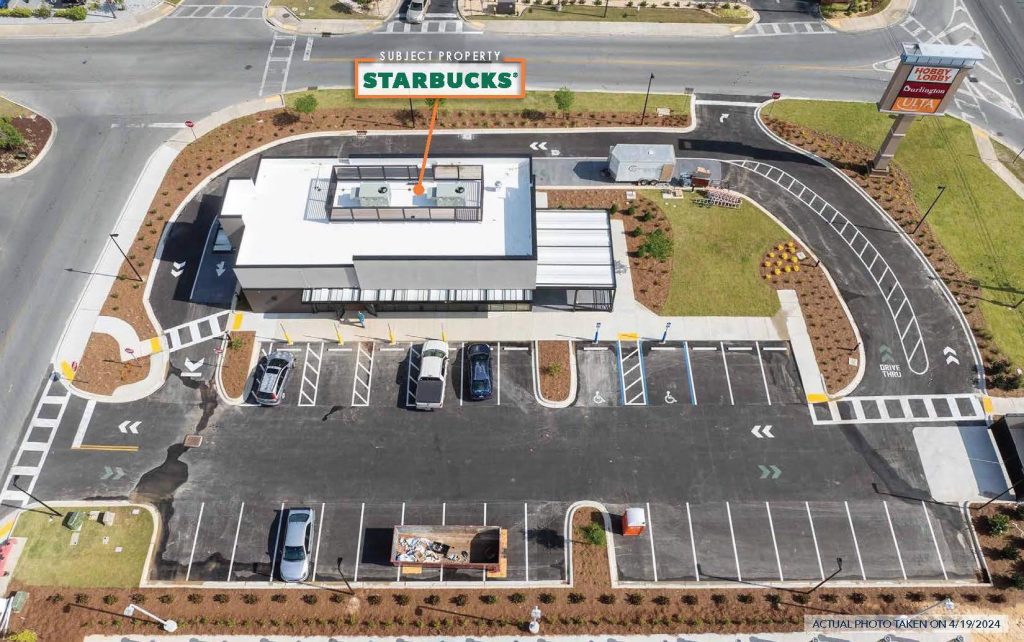Build-to-suit (“BTS”) refers to a real estate deal wherein a developer constructs a building according to the specific needs and requirements of a particular client/tenant, versus constructing it speculatively. In other words, the developer specifically tailors the development to that particular client’s design criteria.
For example, a national tenant such as Starbucks (“SBUX”) comes to the developer and says, “build me a 3,000 square foot restaurant with a drive-through at this location based on our set design criteria and deliver it on X date.” The developer agrees and enters into a lease with SBUX promising to hand over the keys on X date.
On the other hand, a “reverse build-to-suit” (“RBTS”) is essentially the opposite whereby a tenant owns or controls a piece of real estate and the developer construct a building on that property. You can think about it as a fee development deal.
Tips
- As a developer, make sure the lease is fully executed between you and the tenant. Typically, that lease can be anywhere between 10 to 15 years plus 4 five year options to extend.
- Specifically, pay close attention to lease language regarding a) exclusivity i.e., SBUX imposing a coffee restriction against other users who sell coffee, b) acquisition date penalty and reimbursement fee i.e., developer being required to purchase the site by X date or pay X amount to the tenant for failing to do so, c) insurance reimbursement. i.e., tenant being responsible for reimbursing the Landlord for insurance paid by the Landlord, d) assignment i.e., guarantor not being released of the liability once the developer sells the asset.
- Most of the time, national retail tenants require great locations in prime retail corridors with other national tenants and lots of traffic. It will be important to have demand drivers that draw people to the location, including a mix of other retailers such as banks, other quick service/fast casual restaurants, etc. Major retailers look for 25,000+ daily cars (AADT).
- If you are fortunate, the tenant may put you on a specific site they want. Other times, you will have to present several site options to choose from.
- Foster relationships with growing tenants. Build relationships with tenant representatives i.e., tenant brokers and or tenant real estate managers. At times, you may have a banging piece of real estate that can be occupied by several national tenants. It will be imperative to fill those vacant parcels with other national tenants. It is a simple rinse and repeat process.
- Control the land. If you have the relationship with a landowner who has great real estate, put the site under control without having to own it until you break ground. This saves you mortgage carry costs and property taxes. To earn a good profit, merchant developers look for a 20 basis point spread on their investment. If you develop a property at an 8 cap, you will want to sell it at a minimum 6 cap or more.
- As a developer, always start to carry general liability insurance once the development receives its Certificate of Occupancy. Typically, the hiring General Contract (GC) carries its own insurance policy during construction. As soon as you receive a CO or its equivalent, GC’s policy will no longer apply.
Brief BTS Development Overview
- Once the location has been confirmed and the tenant has expressed interested via a Letter of Intent, hire an engineer to draw up a conceptual site plan. This will be used to gain tenant’s real estate committee (REC) approval. The site plan will also be used during the per-application meeting with the municipality.
- Receive approval from REC and receive an LOI from the intended user. This process typically takes 90-120 days for large national tenants such as SBUX and much quicker for smaller, more regional tenants. Negotiate and execute a lease.
- If the property is not properly zoned for the user’s intended use, go through the entitlements process with the municipality and get the property rezoned. At times, all you may need is to obtain a variance, conditional use or exception. This process will take time, so account that in your contract due diligence period.
- Ensure that access will be permitted by the Department of Transportation (DOT), utilities are brought to site or if not, they will be available, also that permits will be issued by applicable agencies i.e., water, sewer, electric, gas, and internet.
- Draw up civil and architectural plans and submit to the municipality’s building department for approval. Some municipalities allow for concurrent review process, while others require developers to first go through site plan/civil plan approval, followed by architectural plans.
- Obtain bids from qualified general contractors and award the job to the right GC. Begin construction and ensure that construction deadlines are met. Finally, complete construction and obtain a Certificate of Occupancy or its equivalent.
- Once the development is complete, the tenant has moved in and begun its operations, decide on whether to hold on to the asset and collect rent as a Landlord, or list the asset on an open market. Usually, national NNN tenant deals have lower cap rates, but they provide a safe return for 10-15 years and also having options to extend.
Photo: Credit
